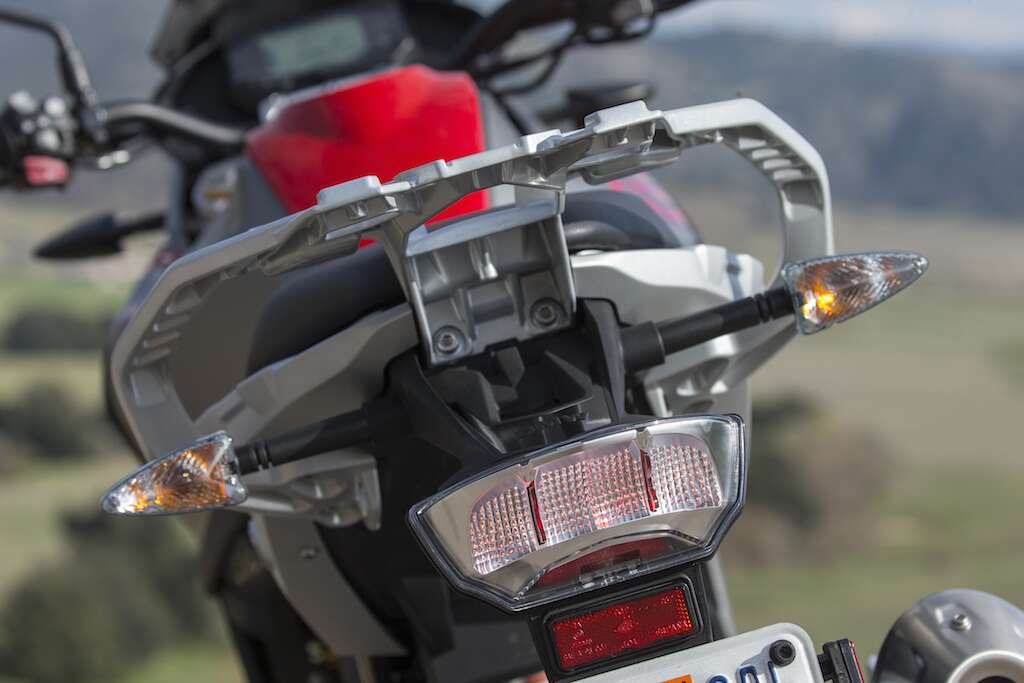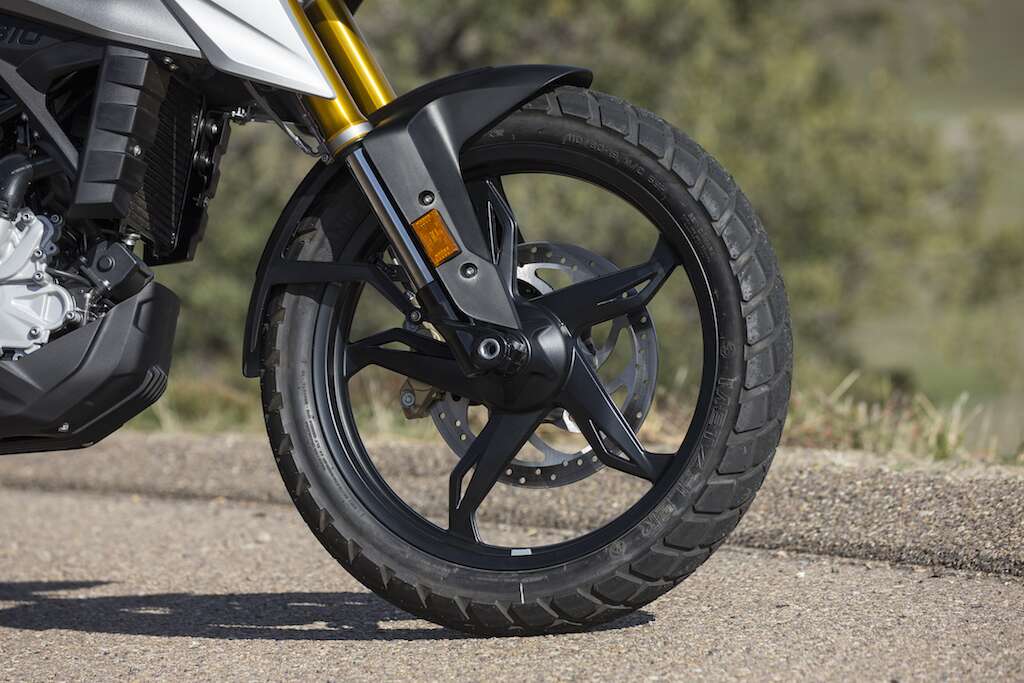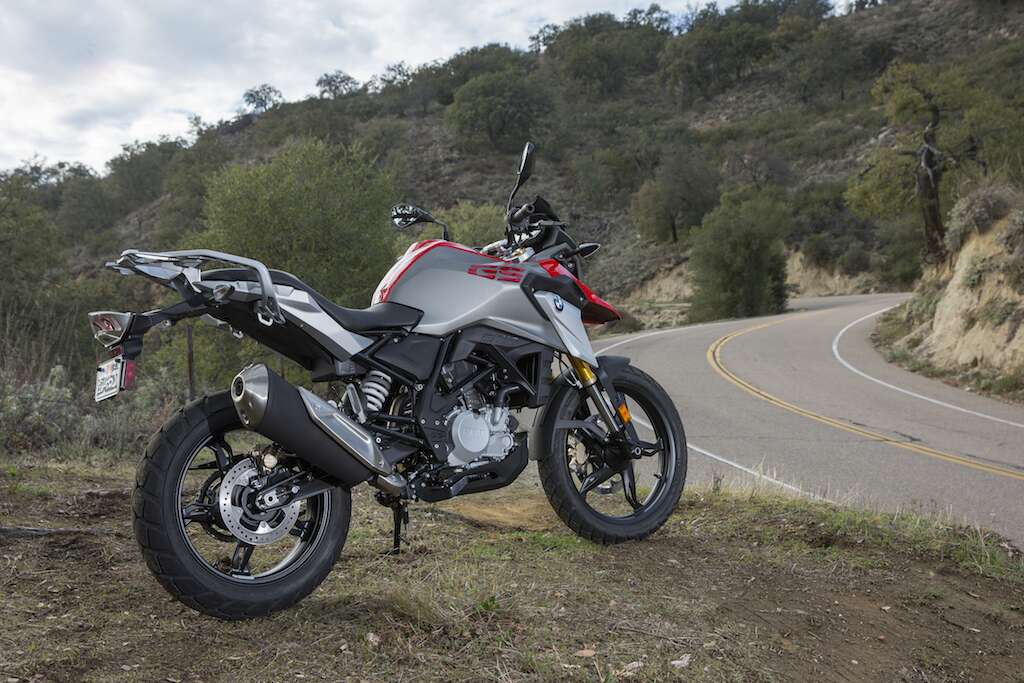I’m about to ride the new BMW G 310 GS, and I want to believe in the mighty legend of the BMW GS, the mudbog sloshing, climb-any-mountain, Camel Trophy mythology of it all. But I’m reading up on the 310 and coming up short. Single-cylinder engine? Okay. Inverted shocks? Impressive for a sub-$6,000 price point. But 34 horsepower and—wait for it—made in India?
This might be a tough one.
While the spread of electrification and crossovers has transformed the car industry, the motorcycle world—compelled by a shrinking buying public different forces—has shifted even more dramatically. Gone are the days when a motorcycle could sell simply because of its huge displacement. Remember the chrome-slathered Suzuki C109R cruiser, which claimed the largest pistons of any roadgoing vehicle? It is no longer, along with countless other casualties of the diminishing motorcycle marketplace.
The harsh reality—on very public display as impending trade wars force Harley-Davidson to move some production to Europe—the bike business has trimmed down, a trend that runs counter to the spending habits of GS customers who spring for premium 800cc and 1,200cc dual-purpose machines and the fancy farkles that go with them.
The G 310 GS is BMW’s second-ever small displacement bike (behind the more tarmac-focused 310 R). With a meager $5,695 starting price ($5,940 with destination fees), the wee GS puts BMW in previously uncharted territory, going against the likes of the Honda CRF250L Rally ($5,899) and Kawasaki Versys-X 300 ($5,399, or $5,699 with ABS).
My first ride of BMW’s diminutive GS was served up on San Diego County’s meandering roads and trails near the Mexico border, where my skeptical mind had plenty of time to ponder the modern paradox of an affordable Beemer capable of light offroading and highway cruising. The second-smallest GS has a seat height of 32.9 inches, which is 2 inches higher than the 310 R due to the bike’s greater ground clearance, bigger 19-inch front wheel, and lengthier suspension travel. Thanks to the narrowness of the saddle and the softness of the suspension, it doesn’t feel quite so tall once you settle into the perch (though the tank forces a rather wide spread of the legs); my inseam is 32 inches and I found the GS absolutely manageable, though your height and ergonomic experience may vary.
The 310 doesn’t require the clutch to be pulled while firing up the engine, a handy feature that enables one-handed start-ups. Unlike most thumpers (ie, single-cylinder bikes), the 310 GS’s 313cc engine is relatively un-vibe-y, inviting liberal use of much of its 10,000 rpm powerband, which only starts harshing at the footpegs around halfway to the redline. Power builds progressively, and a good portion of this BMW’s get-up-and-go occurs at the upper end of the power register, with the peak 34 horsepower arriving at 9,500 rpm and the top twist of 21 lb-ft occurring at 7,500 rpm. Push past the digital bar graph tachometer’s indicated 10,000 rpm redline, and you’ll reach a soft limiter at around 11,000 rpm. Incidentally, the engine’s reviness may sound like a fearsome thing, but even on rain moistened, off-highway trails, there’s little-to-no danger of power-sliding yourself into trouble, such are the understated benefits of 34 horsepower. Coupled with the bike’s 374-pound curb weight, the mild power makes the absence of traction control a non-issue.
The suspension’s only adjustability is pre-load at the rear, so the 310 GS is tuned for a generally cushy ride that enables relatively high-speed cruising over potholes and ruts without upsetting the chassis too significantly. The upright seating position makes it easy to stand up on the pegs while riding over the rough stuff, and the handlebars aren’t raised too high, enabling quick, sharp turns at low speeds. Thanks to the generous range of handlebar motion, tight trails and low-speed parking maneuvers are easily executed.
The radially-mounted four-piston front and single-piston rear ABS brakes are manufactured in India by Brembo’s “Bybre” sub-division, which work effectively enough on paved surfaces. I found initial bite somewhat soft and overall stopping power adequate, though essentially in line with what you’d expect from an affordably priced bike–if there is one item that betrays this BMW’s price point, it might be the stoppers. ABS can be disabled for offroad use by holding down a button on the left switchgear. And speaking of controls, the LCD display offers a better-than-expected spread of information, from engine temperature and average MPGs to gear position and cruising range.
The 310 GS proved easy to ride on a long, cold ride that offered a combination of light trails, twisty canyon roads, and open highways: the shifter actuates with a positive, easy click, steering is light, and there’s a solid balance between stability and maneuverability, and thanks to its relative light weight the mini-me engine is generally capable of helping the pint-sized bike get out of its own way. While higher speed cruising is not its forte (BMW lists top speed at 89 mph, a fact which I can, off the record, confirm), the 310’s plush suspension handles city roads and light trails rather well, and the fact that it doesn’t make insane amounts of power makes it somewhat confidence-inspiring to wring out revvy single from stoplight to stoplight.
After living with the 310 GS for a few weeks the matrix between its on and off-road skillsets invariably bring me back to my original question, and at least in my mind and what I’ve thought of GS models based on decades of observation and experience, there’s a nomenclature identity crisis going on here. On the one hand, the littlest GS’s build quality and range of capabilities put it near the top of its segment, offering an impressive value proposition for riders who want a smaller bike capable of light off8roading and around-town flickability. The diminutive engine claims an impressive 71 mpg using the World Motorcycle Test Cycle standard, lending it theoretical cruising range of over 200 miles based on its 2.9-gallon tank (assuming you don’t flog the living daylights out of the diminutive mill). But is it really a bad-to-the-bone GS, the kind of bike you’d take on a ‘round-the-world odyssey? Maybe the initials are used loosely here, or is the purpose of GS family evolving? The motorcycle industry is changing fast, and this new adventure machine fits a niche nobody knew would exist just a few short years ago. So perhaps we don’t call it a GS, or maybe we adjust our definition of the hallowed, time-proven name. But regardless of what you call it, BMW’s smallest adventure-ready tool proves itself versatile, capable, and entirely ready for the future.
Source: Read Full Article



